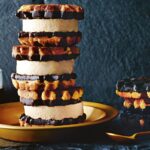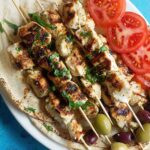Packing healthy and delicious lunches for your children can be a daily challenge, especially when navigating dietary restrictions like nut allergies. This guide offers a vibrant collection of quick, nut-free snack ideas perfect for busy parents. We’ll explore simple recipes, creative presentation tips, and nutritional benefits, ensuring your child’s lunchbox is filled with appealing and allergy-safe treats. Discover how to transform ordinary snacks into exciting culinary adventures that even the pickiest eaters will love!
From colorful fruit and veggie skewers to satisfyingly simple alternatives, we’ll cover a range of options to keep your child’s lunchbox exciting and nutritious. We’ll also address practical concerns like storage and packing, offering helpful advice to maintain freshness and avoid lunchtime mishaps. Get ready to elevate your child’s lunchtime experience with these fun, healthy, and completely nut-free snack ideas!
Quick & Easy Nut-Free Snack Ideas
Packing nutritious and appealing lunches for kids can be a challenge, especially when considering dietary restrictions. These quick and easy nut-free snack ideas are designed to be both delicious and convenient, ensuring your child enjoys a healthy and satisfying midday meal. Each recipe prioritizes simplicity and speed, minimizing your preparation time while maximizing nutritional value.
Five Nut-Free Snack Recipes
These recipes require minimal ingredients and preparation time, making them perfect for busy mornings.
- Ants on a Log: Celery sticks filled with peanut-butter alternative (sunflower seed butter or tahini) and topped with raisins. The crunchy celery, creamy spread, and sweet raisins create a delightful textural and flavor combination. Preparation time: 2 minutes.
- Fruit & Veggie Skewers: Thread bite-sized pieces of colorful fruits (grapes, strawberries, kiwi) and vegetables (cucumber, bell peppers) onto skewers. This visually appealing snack is packed with vitamins and fiber. Preparation time: 5 minutes.
- Popcorn Trail Mix: Combine air-popped popcorn with dried cranberries, pumpkin seeds, and mini pretzels. This salty-sweet mix provides a satisfying crunch and a boost of energy. Preparation time: 5 minutes.
- Cheese & Crackers: A classic combination that’s always a hit! Choose whole-grain crackers and a variety of cheeses for added flavor and nutritional value. Preparation time: 1 minute.
- Hard-boiled Eggs: A simple, protein-packed snack that’s easy to prepare ahead of time. Hard-boil a batch of eggs at the beginning of the week for grab-and-go convenience. Preparation time: (pre-boiled) 1 minute.
Creative Presentation Ideas
Presentation is key when it comes to enticing children to eat healthy snacks. A little creativity can go a long way in making lunchbox snacks more appealing.
- Fun Shapes: Use cookie cutters to create fun shapes from cheese slices or sandwiches. This simple trick transforms ordinary snacks into exciting culinary creations. Imagine a star-shaped cheese sandwich or heart-shaped cucumber slices.
- Colorful Arrangements: Arrange snacks in a visually appealing way within the lunchbox. Think rainbow-colored fruit skewers or a pattern of crackers and cheese cubes. The visual appeal stimulates appetite and encourages consumption.
- Themed Snacks: Coordinate snacks around a theme. For example, a “pirate” theme might include “treasure” (dried fruit) and “gold coins” (cheese crackers). This playful approach transforms a simple meal into an adventure.
Snack Showcase
This table visually represents the five snacks, highlighting their vibrant colors and textures.
| Snack | Image Description | Color Palette | Texture |
|---|---|---|---|
| Ants on a Log | Green celery sticks filled with creamy tan sunflower seed butter, topped with dark brown raisins. | Greens, tans, browns | Crunchy, creamy |
| Fruit & Veggie Skewers | Bright red strawberries, green grapes, orange segments, and yellow bell pepper pieces threaded onto a colorful skewer. | Reds, greens, oranges, yellows | Juicy, crisp |
| Popcorn Trail Mix | Fluffy white popcorn mixed with dark red cranberries, light green pumpkin seeds, and light brown pretzels. | Whites, reds, greens, browns | Crunchy, light |
| Cheese & Crackers | Golden-brown whole-grain crackers with slices of pale yellow cheddar and sharp white parmesan cheese. | Golds, yellows, whites | Crunchy, creamy |
| Hard-boiled Eggs | Perfectly peeled hard-boiled eggs with a pale yellow yolk and firm white egg white. | Pale yellows, whites | Firm, smooth |
Fruit & Veggie Skewers Video Script
[Scene: Close-up shot of various colorful fruits and vegetables – strawberries, grapes, kiwi, cucumber, bell peppers – neatly arranged on a cutting board.]
Narrator: Let’s make some fun and healthy fruit and veggie skewers! First, wash all your fruits and vegetables thoroughly.
[Scene: Hands carefully washing the fruits and vegetables under running water.]
Narrator: Now, cut them into bite-sized pieces. Make sure the pieces are roughly the same size for easy threading.
[Scene: Hands skillfully cutting the fruits and vegetables into even pieces.]
Narrator: Grab your skewers and start threading! Get creative with the arrangement – alternate colors and types of fruit and vegetables for a visually appealing snack.
[Scene: Hands expertly threading the fruit and vegetable pieces onto the skewers, creating a colorful pattern.]
Narrator: And there you have it! Colorful, healthy, and fun fruit and veggie skewers, perfect for a kid’s lunchbox. Enjoy!
[Scene: A final shot of the completed skewers, vibrant and ready to be packed.]
Health Benefits of Nut-Free Snacks
Choosing nut-free snacks is crucial for children, especially those with nut allergies, ensuring their safety and providing essential nutrients for healthy growth and development. Many delicious and nutritious alternatives exist that offer comparable, and sometimes even superior, nutritional benefits to nut-based snacks. This section explores the advantages of three specific nut-free options, highlighting their contribution to a balanced diet and comparing their nutritional profiles to common nut-containing counterparts.
Nutritional Benefits of Three Nut-Free Snacks
This section details the nutritional benefits of three specific nut-free snacks: sunflower seeds, edamame, and whole-grain crackers. Each offers a unique profile of vitamins, minerals, and fiber, contributing to a child’s overall well-being.
Sunflower seeds are a powerhouse of Vitamin E, a potent antioxidant that protects cells from damage. They also provide healthy fats, magnesium for bone health, and selenium, an essential mineral for thyroid function. A small handful offers a satisfying crunch and a boost of energy. Edamame, or young soybeans, are an excellent source of plant-based protein, crucial for building and repairing tissues. They are also rich in fiber, promoting healthy digestion, and contain iron, important for oxygen transport throughout the body. The bright green pods offer a fun and appealing snack. Whole-grain crackers, when made with minimally processed ingredients, provide complex carbohydrates for sustained energy release, along with fiber for digestive health. They can also be a good source of various B vitamins, essential for energy metabolism and nerve function. Their versatility allows for easy customization with healthy toppings.
Comparison of Nutritional Value
The following table compares the nutritional value of these three nut-free snacks with common nut-containing alternatives, such as almonds and peanuts. Note that serving sizes and specific nutritional content can vary based on brand and preparation.
| Snack | Protein (g) | Fiber (g) | Healthy Fats (g) |
|---|---|---|---|
| Sunflower Seeds (1/4 cup) | 5 | 2 | 12 |
| Edamame (1/2 cup shelled) | 8 | 5 | 2 |
| Whole-Grain Crackers (2 crackers) | 2 | 2 | 1 |
| Almonds (1/4 cup) | 6 | 3 | 14 |
| Peanuts (1/4 cup) | 7 | 2 | 15 |
Health Risks Associated with Nut Allergies
Understanding the potential health risks associated with nut allergies is critical for ensuring children’s safety and well-being. Nut allergies can be severe, even life-threatening. It is imperative to prioritize nut-free options in environments where children with nut allergies are present.
- Anaphylaxis: A severe, potentially fatal allergic reaction that can cause difficulty breathing, swelling of the throat and tongue, and a sudden drop in blood pressure.
- Skin reactions: Hives, itching, and eczema can occur after exposure to nuts or nut products.
- Gastrointestinal issues: Nausea, vomiting, and diarrhea are common symptoms of nut allergies.
The presence of even trace amounts of nuts can trigger a reaction in individuals with severe allergies. Therefore, providing nut-free alternatives is not just a preference, but a crucial safety measure for protecting vulnerable children.
Recipe Variations & Customization

Adapting simple recipes to suit various dietary needs and preferences is easy and adds a fun element to meal preparation. These adjustments not only cater to specific requirements but also introduce exciting flavor profiles and textures, keeping children engaged with their healthy snacks. We will explore how to modify two previously mentioned recipes – let’s assume one is fruit skewers and the other is vegetable sticks with hummus – to accommodate different dietary needs and enhance their appeal.
These modifications demonstrate the flexibility of basic recipes and encourage creativity in the kitchen. Small changes can significantly impact a child’s willingness to try new foods and increase their nutritional intake. The following sections will detail specific adaptations and suggestions for creating even more appealing and diverse snacks.
Adapting Recipes for Dietary Needs
Let’s take our fruit skewers and vegetable sticks with hummus as examples. We can easily customize these to accommodate vegetarian, vegan, and gluten-free diets.
Fruit Skewers: The original recipe likely involves a variety of fruits. To make this vegan and gluten-free (which it likely already is), simply ensure all fruits used are naturally vegan and gluten-free. For a vegetarian adaptation, no changes are necessary, as it’s already vegetarian.
Vegetable Sticks with Hummus: The standard hummus recipe typically contains chickpeas, tahini, lemon juice, garlic, and olive oil. This is already vegetarian and vegan. To make it gluten-free, ensure that the tahini used is certified gluten-free, as some brands may contain gluten. For a vegetarian adaptation, no changes are needed.
Adding Variety and Excitement
Three simple ways to elevate these snacks and increase their appeal to children are to experiment with different fruits, vegetables, and spices.
- Fruit Skewers: Instead of just using common fruits like apples and bananas, try incorporating colorful additions such as kiwi, mango, or strawberries. The vibrant colors make the skewers more visually appealing, and the variety of textures and flavors adds excitement.
- Vegetable Sticks with Hummus: Expand beyond carrots and celery. Introduce colorful bell peppers (red, yellow, orange), cucumber slices, or cherry tomatoes. The different colors and shapes make the snack more fun, and the range of textures adds interest.
- Spice Additions: A pinch of cinnamon on apple slices, a sprinkle of chili powder on roasted sweet potato sticks, or a dash of cumin in the hummus can add a subtle kick of flavor that both adults and children can enjoy. Remember to start with small amounts and adjust according to taste preference.
Creating Customized Hummus
This recipe provides a step-by-step guide to creating a customized hummus, perfect for our vegetable sticks.
Ingredients:
- 1 can (15 ounces) chickpeas, rinsed and drained
- 1/4 cup tahini (certified gluten-free if needed)
- 2 tablespoons lemon juice
- 1 clove garlic, minced
- 1/4 teaspoon cumin
- 1/4 cup water (or more, to reach desired consistency)
- Salt and pepper to taste
- Optional: 1 tablespoon olive oil for garnish
Instructions:
- Combine chickpeas, tahini, lemon juice, garlic, cumin, and water in a food processor.
- Process until completely smooth, scraping down the sides as needed. Add more water, one tablespoon at a time, until you reach your desired consistency.
- Season with salt and pepper to taste.
- Transfer to a serving bowl. Drizzle with olive oil (optional) and serve with your favorite vegetable sticks.
Creating healthy and nut-free lunchboxes doesn’t have to be a daunting task. By incorporating the quick recipes, creative presentation ideas, and practical packing tips Artikeld in this guide, you can ensure your child enjoys delicious, allergy-safe snacks every day. Remember, a little creativity and planning go a long way in making lunchtime a fun and nutritious experience for your little ones. So, ditch the nut-based snacks and embrace the exciting world of allergy-friendly culinary delights!
FAQ Resource
What if my child doesn’t like the suggested fruits or vegetables?
Encourage experimentation! Offer a variety of options and let your child participate in choosing their snacks. You can also adapt recipes to include their favorite fruits and vegetables.
How long can I store these nut-free snacks in the lunchbox?
This depends on the specific snack and storage conditions. Generally, it’s best to pack lunchboxes in the morning and consume snacks within a few hours to maintain freshness and quality. Refer to the individual snack storage recommendations for more detailed guidance.
Are all the suggested recipes suitable for all ages?
Most are, but always consider your child’s age and developmental stage when selecting snacks. Ensure the size and texture of the food are appropriate for avoiding choking hazards.
Can I freeze any of these snacks for later use?
Some snacks, like fruit and veggie skewers, freeze well. However, always check the specific recipe instructions for freezing guidelines. Properly freezing and thawing are crucial to maintain quality and safety.


